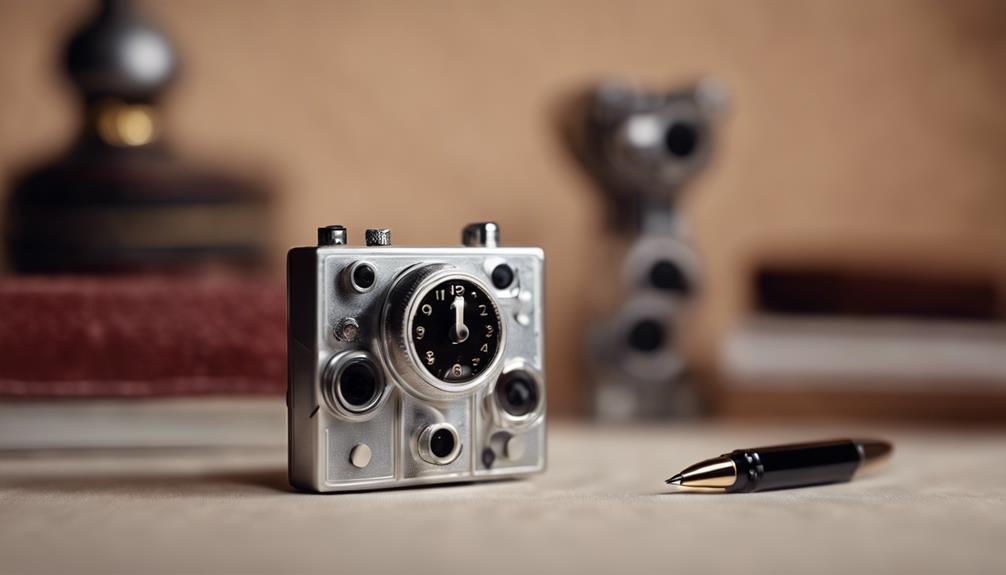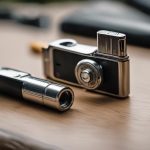Intriguing and discreet, a pinhole spy camera is a tool designed for clandestine surveillance and covert recording. Compact and easily concealed within everyday objects, these cameras feature a small lens strategically positioned for discreet footage. Despite their size, they boast high-quality imaging sensors and advanced circuitry. Operating on a simple yet effective principle, they provide a solution for discreet surveillance needs. Their inconspicuous design and small size make them ideal for various security requirements. If you're curious to explore more about their history, anatomy, working mechanism, applications, and detection tips, there's a wealth of information waiting to be uncovered.
Brief History of Pinhole Cameras
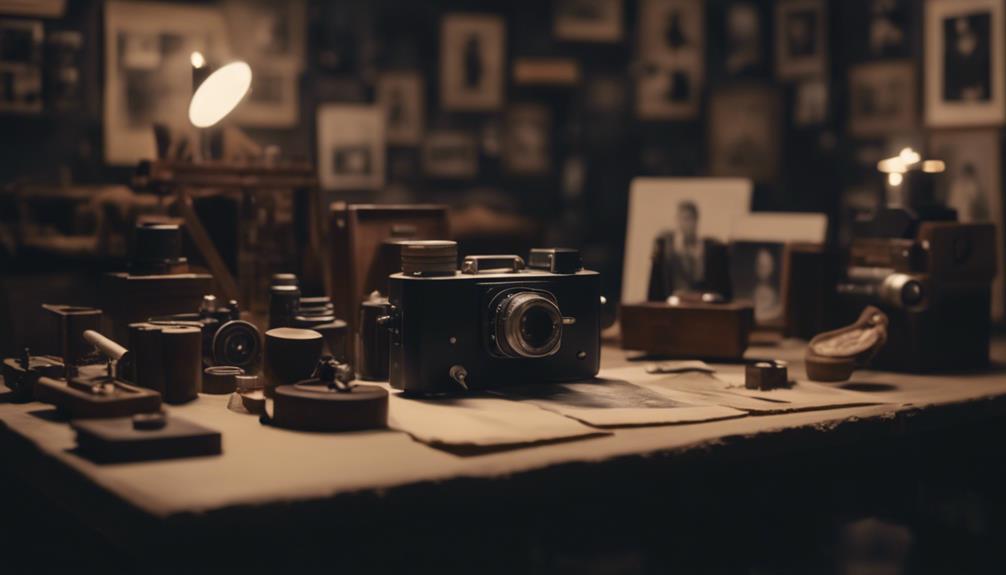
Explore the origins and evolution of pinhole cameras, tracing back to ancient civilizations where the concept of capturing images through a tiny aperture was first discovered.
The origin of pinhole cameras can be dated back to as early as the 5th century BC when the Chinese philosopher Mozi observed that light passing through a small hole in a dark room projected an inverted image of outside scenes. This rudimentary principle laid the foundation for the development of pinhole cameras over the centuries.
The evolution of pinhole cameras continued through the Renaissance period, where artists like Leonardo da Vinci used the camera obscura, a forerunner of the modern pinhole camera, to aid in drawing accurate perspective in their artwork.
As technology progressed, the significance of pinhole cameras grew, leading to their use in scientific experiments, art photography, and even espionage. The simplicity and versatility of pinhole cameras have made them enduring tools for capturing images with a unique and artistic flair.
Anatomy of a Pinhole Spy Camera
Examining the intricate components of a pinhole spy camera reveals the essential technology hidden within its compact frame. These tiny devices are designed with precision, incorporating a small pinhole lens that's strategically placed to capture discreet footage. The size of a pinhole spy camera is incredibly compact, allowing it to be easily concealed within everyday objects such as pens, buttons, or even alarm clocks. Despite their miniature size, these cameras are equipped with high-quality imaging sensors and advanced circuitry that enable them to capture clear video recordings.
The placement of the pinhole lens is vital in ensuring effective surveillance. Typically, the lens is positioned discreetly within the object housing the camera, such as a button or a wall clock, to maintain secrecy and avoid detection. This strategic placement allows the camera to capture footage without drawing attention to itself.
The design of a pinhole spy camera takes advantage of its small size and inconspicuous placement to provide a discreet surveillance solution for various security needs.
Working Mechanism Explained
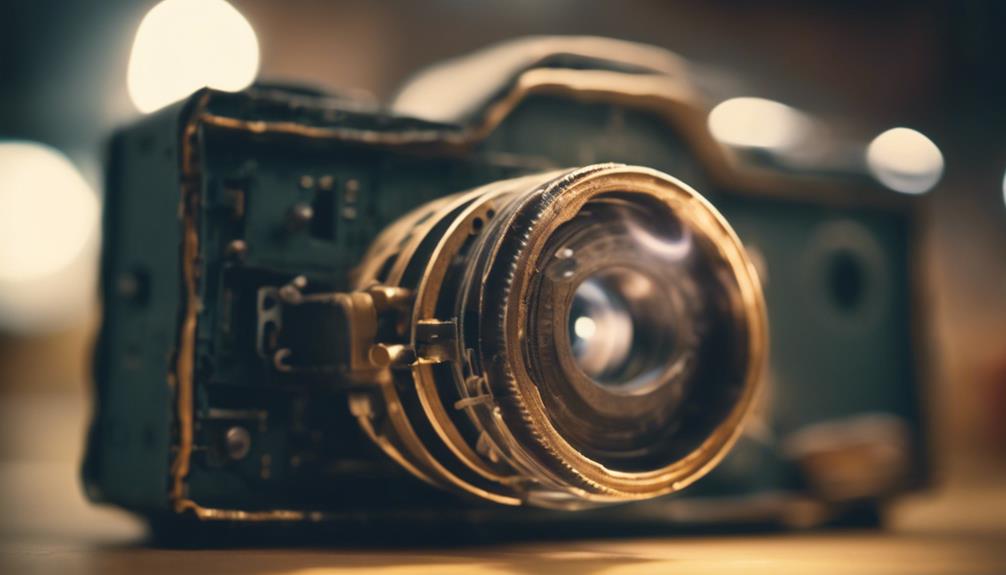
Exploring the inner workings of a pinhole spy camera reveals the intricate mechanism behind its covert surveillance capabilities. This type of camera operates on a simple yet effective principle: a tiny pinhole lens allows light to enter and capture images without being easily detected.
The mechanism explanation is straightforward – light passes through the pinhole onto a photosensitive surface, typically a digital sensor or film, to create an image.
The benefits of a pinhole spy camera lie in its discreet nature. Due to its small size and inconspicuous design, it can be easily hidden in everyday objects like buttons, pens, or even clothing, making it ideal for covert operations.
However, a drawback of this mechanism is the limited image quality it offers. The small size of the pinhole restricts the amount of light that can enter, resulting in lower resolution images compared to traditional cameras.
Despite this limitation, the simplicity and stealth of a pinhole spy camera make it a popular choice for discreet surveillance needs.
Common Applications in Surveillance
Pinhole spy cameras find widespread use in various surveillance scenarios due to their compact size and discreet design. These cameras are commonly employed for covert monitoring in both personal and professional settings.
Law enforcement agencies often utilize pinhole spy cameras in undercover investigations to gather vital evidence without alerting suspects. The discreet nature of these cameras allows for inconspicuous surveillance, making them ideal for capturing footage without drawing attention.
In private settings, pinhole spy cameras are used for hidden recording to monitor activities in homes, offices, or public spaces. They serve as an effective tool for ensuring security and keeping a watchful eye on surroundings without being detected.
The applications of pinhole spy cameras extend to areas where traditional surveillance equipment may be too conspicuous or impractical.
Tips for Detecting Hidden Pinhole Cameras
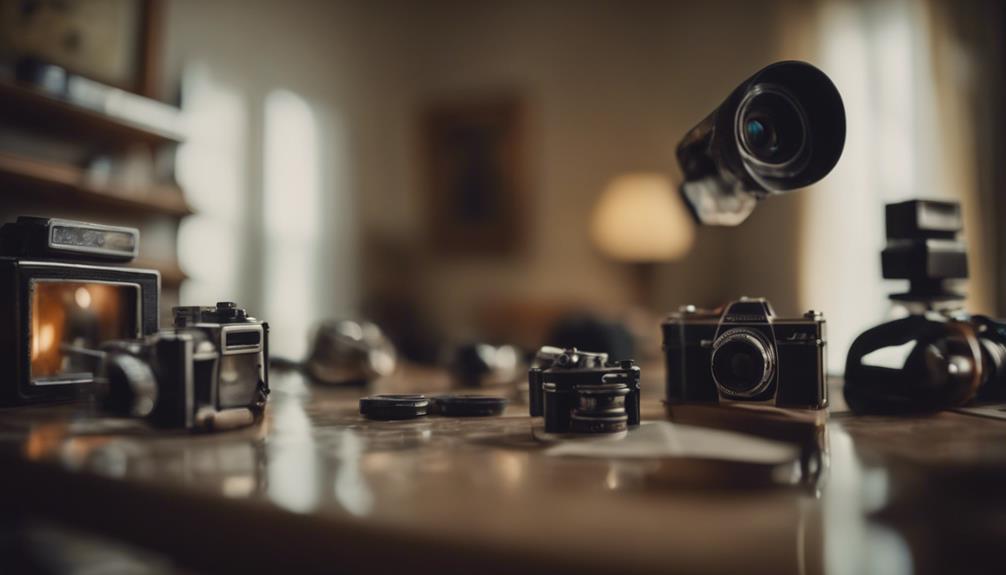
To identify hidden pinhole cameras, carefully scan the environment for any unusual or out-of-place objects that could potentially house a concealed camera.
Start by inspecting common areas where covert surveillance may occur, such as smoke detectors, alarm clocks, or wall outlets. Check for tiny holes that don't seem to serve a purpose, as pinhole cameras require these openings for their lenses.
Use a flashlight to look for reflections that might indicate a camera lens. Additionally, pay attention to any new additions or changes in the room that could hide a camera.
Consider using detecting devices like radio frequency (RF) detectors or camera lens detectors, which can help locate hidden cameras by detecting their radio signals or lenses.
It's crucial to be vigilant about privacy concerns and regularly sweep areas where you value your privacy, like bedrooms, bathrooms, or changing rooms, to make sure your personal space remains secure from potential intrusions.
Conclusion
To sum up, pinhole spy cameras have a rich history dating back to ancient times and continue to be a popular choice for discreet surveillance. Understanding the anatomy and working mechanism of these tiny cameras is essential for detecting them in various settings.
By being knowledgeable about common applications and techniques for detecting hidden pinhole cameras, you can better protect your privacy and security in today's increasingly digital world.
